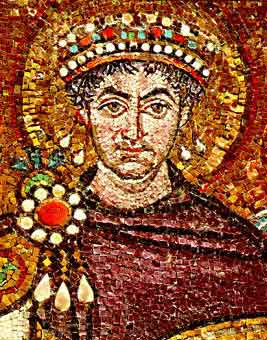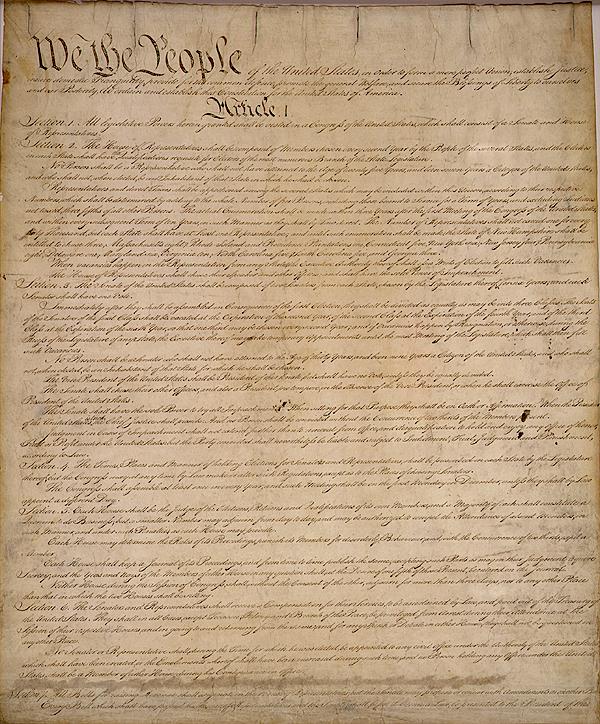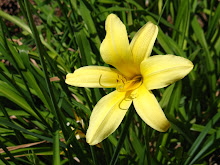
Justinian’s uncle adopted him and also ensured his education. “Justinian was superbly well educated in jurisprudence, theology and Roman history. His military career featured rapid advancement, and a great future opened up for him when, in 518, Justin became emperor. Justinian was appointed consul in 521, and later as commander of the army of the east. He was functioning as virtual regent long before Justin made him associate emperor on April 1, 527. Four months later, Justinian became the sole sovereign upon Justin I's death.” (source) He then made his wife, Theodora, joint ruler of the empire. This proved to be a good decision because she was clever, strong-willed and a good leader. (Millard 92, source)
“The reign of Justinian was an extremely significant period. It marked the final end of the Roman empire; the establishment of the new, Byzantine empire; the beginning of Western Europe's unique position within the civilizations of the Old World; and made possible the spread of Islam and the rise of the Franks…The empire was united under the Eastern emperor in theory; Justinian tried to make it so in fact. His armies invaded the Vandal, Ostrogothic, and Visigothic kingdoms in turn, and, in a series of bitter wars (540-554), re-conquered much of the Mediterranean lands of the West.” (source) “He was the last emperor to attempt to restore the Roman Empire to the territories it enjoyed under Theodosius I.” (source)
Justinian had some architectural achievements as well. The first Hagia Sophia that was built in Constantinople burned down, and he wanted to rebuild it. “Now the Emperor Justinian wanted to rebuild the church in a style that far exceeded the capabilities of any architect of his time. He had the good sense to turn to someone who was not trained as an architect but who was a scholar, knowledgeable in mathematics, statics and dynamics. This person was Anthemius of Tralles, but in Anthemius, the emperor employed someone who was not only a skilled mathematician, but also someone with an artistic genius. Mathematical skills, the ability to teach the builders to accomplish the required tasks, the daring of an innovator, and the vision of an artistic genius combined in Anthemius to produce one of the most beautiful buildings the world has seen.” (source) (Rosen 93)
Although his reign is often called the Golden Age of the Roman Empire, the end of Justinian’s rule was disastrous. A plague hit the people and they were dying quickly. “Procopius gives us a good account of the plague, modeled on Thucydides. This was clearly bubonic rather than the more deadly pulmonary plague, for Procopius indicates that people who cared for the ill did not necessarily contract the plague themselves, and pulmonary plague is directly communicable to another person whereas the bubonic variety is carried by fleas, which live on rodents, particularly the black rat. Nonetheless, bubonic plague is deadly enough: without modern treatment it can result in death in 40 to 70 per cent of its victims.
The plague moved from city to city in the empire. In 558 it returned to Constantinople for a new crop of victims.” (source)
“In fact, the number of natural disasters which befell the empire in Justinian's reign is remarkable: earthquakes, floods and plague… The plague brought a period of economic growth to an end. One estimate suggests that the population of the empire in 600 was only 60 per cent of what it was in 500. The loss of so many taxpayers hurt the treasury, though Justinian does not seem to have greatly curtailed his building program to take declining revenues into consideration. Recruits for the army became harder to find and Justinian had to rely more on barbarian troops.” (source)
Theodora died of cancer in 548, but Justinian lived some years longer, dying in 565. He was not a humble man, (thinking of himself as wiser than Solomon,) but he was smart and a good leader. Even though the plague was a huge tragedy that occurred during his reign, his reign is still thought of as the Golden Age of the Roman Empire. (Now that’s something to be proud of.) (source)
Works Cited
Millard, Dr. Anne and Patricia Vanags. The Usborne Book of World History. London, England: Usborne Publishing Ltd. 1985.
Rosen, William. Justinian’s Flea: The First Great Plague and the End of the Roman Empire. U.S.A.: The Penguin Group. 2007.







